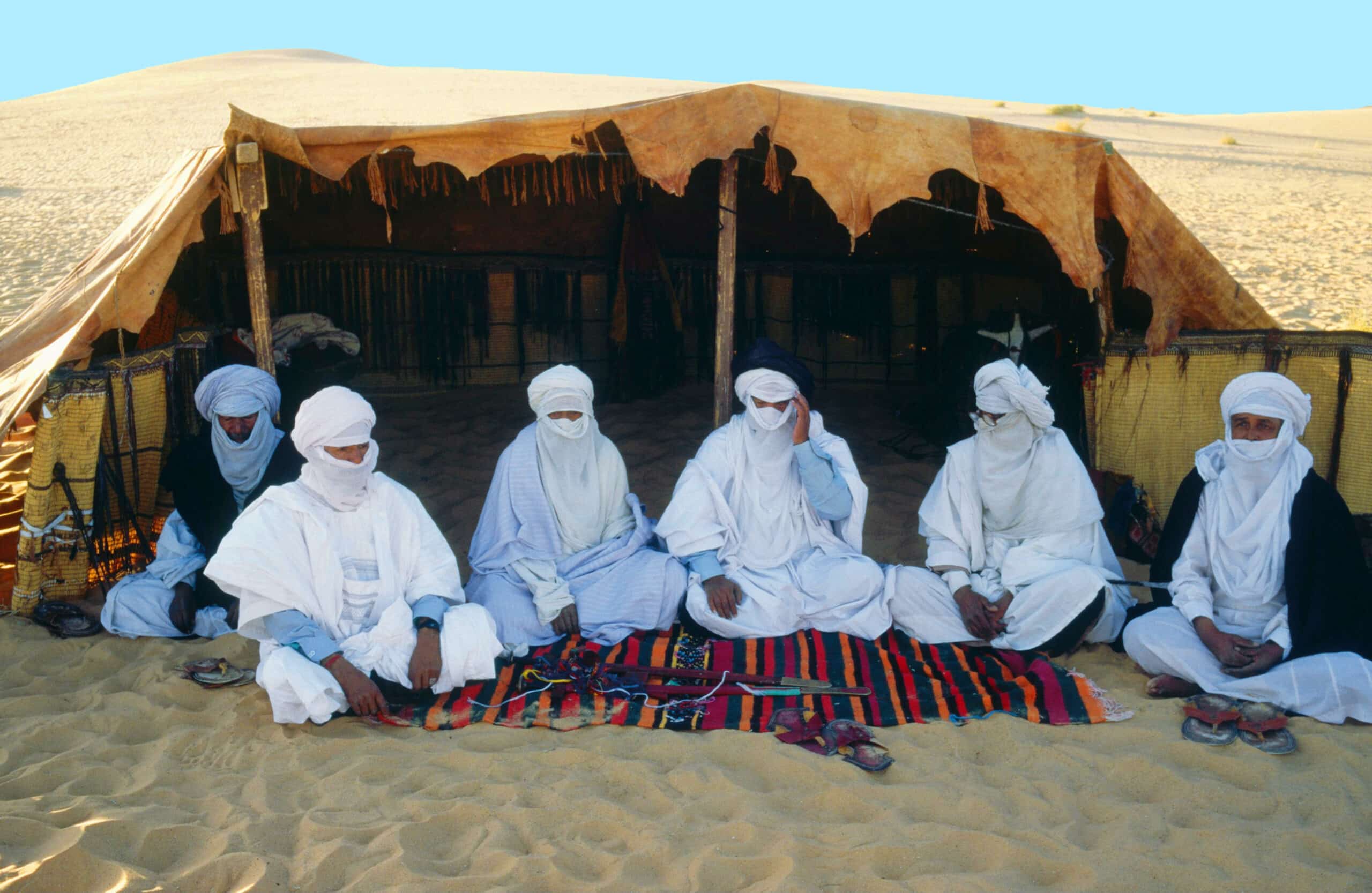The Tuareg woman, guardian of the tent
The image of the tent is inseparable from that of the woman. Among the Tuareg, a proverb says: ‘The woman is the guardian of the tent’.
In fact, putting up and taking down the tent is the sole responsibility of the women. Its construction is a moment of solidarity and sharing between the inhabitants of the camp. When a woman has to set up her tent, she is helped by other women, even if they belong to a different group. These moments of collaboration are an opportunity to exchange ideas, strengthen social ties and perpetuate traditions.
In Tuareg society, the tent belongs to the women. When a woman marries, her mother gives her a tent or makes her a new one. When she moves to another camp, she creates an autonomous space, with her own utensils, possessions and entourage, thus asserting her independence.
As for the men, they have to leave the family tent as soon as they reach puberty and live away from the camp until they get married. A man is given a tent when he marries, but it remains his wife’s property. In the event of divorce or widowhood, he loses not only his partner but also his home, while the woman retains the tent and her autonomy.

